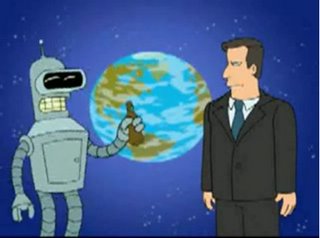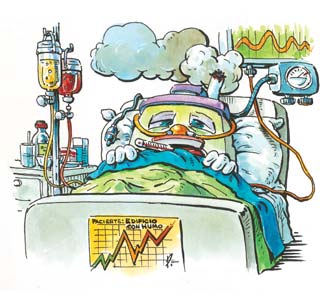Each Other — Where We Are
The Big Talk
How to tell a six year old where all the birds and bees have gone
by Sandra Steingraber
Published in the September/October 2008 issue of Orion magazine
I WAS GOOGLING MYSELF recently (in an attempt, if you must know, to locate an essay that I had published somewhere), and I managed to misspell my own name. So I was directed to the one source that had mangled my name in the same way. And that is how I was confronted, in an obscure blog, with the question, “Why isn’t Sandra Steingraber [with dyslexic spelling] talking about climate change?”
It was unsettling. As the days went by, I began an imaginary argument.
Look, I first wrote about receding glaciers in 1988. I was assigning Al Gore to college students in 1992. Not long ago, I made climate instability the centerpiece of a commencement address I gave at a rural college in coal-is-king Pennsylvania. And if you think all the trustees were pleased with that theme, I invite you to give it a try. So the question is not “Why is S.S. not talking about climate change?” The question is “Why is S.S. not talking about it AT HOME?”
Okay. Why don’t you talk about it at home?
Because I have young children and because I believe that frightening problems need to be solved by adults who should just shut up and get to work.
So, how long are you going to keep hiding the truth from your kids?
That’s as far as I got before three other notable things happened. First, Elijah asked to be a polar bear for Halloween. As I pinned the chenille fabric, it occurred to me that his costume might well outlast the species. I decided not to tell him that.
A month later, Elijah asked his sister for a weather report. Faith walked out onto the porch, spread out her arms in the manner of Saint Francis, and came back in. “It’s global warmingish,” she said and went back to her cereal. No comment from me.
And then I overheard a conversation on the playground. One child said, “I know why it’s hot. Do you?”
Another said, “It’s because the Earth is sick.” They all nodded. I said nothing.
IT’S TIME TO SIT DOWN with my kids and have the Global Warming Talk. I carried off the Sex Talk—and its many sequels—with grace and good biology. Surely, I can rise to this new occasion.
On the surface, procreation and climate change seem opposite narratives. Sex knits molecules of air, food, and water into living organisms. Climate change unravels all that. The ending of the sex story is the birth of a family. The climate change story ends with what biologist E. O. Wilson calls the Eremozoic Era—the Era of Loneliness.
But then I realized that the two stories share a common epistemological challenge. Both are counterintuitive. In the former case, you have to accept that your ordinary existence began with an extraordinary, unthinkable act (namely, your parents having intercourse). In the latter case, you have to accept that the collective acts of ordinary objects—cars, planes, dishwashers, iPods—are ushering in things extraordinary and unthinkable (dissolving coral reefs, daffodils in January). So, I reasoned, perhaps the same pedagogical lessons apply: during the Big Talk, keep it simple, leave the door open for further conversation, offer reading material as follow-up.
Of which there is no shortage. In fact, a veritable cottage industry of children’s books on climate change has sprung up almost overnight. These range from the primer, Why Are the Ice Caps Melting? (Let’s Read and Find Out!), in which lessons on the ravaging of ecosystems also offer plenty of opportunities to practice silent e, to the ultra-sophisticated How We Know What We Know About Our Changing Climate: Scientists and Kids Explore Global Warming, by foremost environmental author Lynne Cherry, in which middle school readers are cast as coprincipal investigators. This new literary subgenre is impressive. Reading its various offerings, I found myself admiring the respectful tones and clear explanations. These books describe global warming as a reality that no longer lingers in the realm of debate. And yet, they are not, for the most part, scary. Indeed, the first sentence in the inside flap of How We Know What We Know is “This is not a scary book.”
And here is where the pediatric versions of the climate change story depart from their adult counterparts. The recent crop of books on global warming intended for grown-ups focuses on the surreal disconnect between the evidence for rapidly approaching, irreversible planetary tipping points (overwhelming) and the political response to that evidence (mostly zilch). The children’s books profile heroic individuals fighting to save the planet—in ways that kids can get involved in. To read the children’s literature is to see the world’s people working ardently and in concert with each other to solve a big problem . . . and enjoying a grand adventure while they’re at it.
Is this the fiction we all should be laboring under? I don’t know. I do know that a fatalistic mindset, which afflicts many adults but almost no children, is a big part of what’s preventing us from derailing the global warming train that has now left the station. On this, I wholly agree with sociologist Eileen Crist, who argues that fatalism, masquerading as realism, is a form of capitulation that strengthens the very trends that generate it. I do know that we grown-ups need visions of effective challenges and radical actions that can turn into self-fulfilling prophecies.
I also know that I needed something to say to my six year old when we walked home from the library in April—no leaves to offer shade, the bank’s LED sign reading eighty-four degrees—and he turned his ingenuous face to mine to ask, “Mama, is it supposed to be so hot?”
So I am working on my talk. For inspiration, I have arranged on my desk three documents. One is an essay that Rachel Carson published in Popular Science in 1951—eight years before my birth. It’s entitled “Why Our Winters Are Getting Warmer,” and it includes a drawing of Manhattan deluged by seawater. Another is Carson’s essay “Help Your Child to Wonder,” published five years later. The third is a book by poet Audre Lorde that includes the sentence: Your silence will not protect you.
My talk features a story about a boat in which we all live—people, butterflies, polar bears. A storm starts to rock the boat. The waves are chemical pollution, habitat destruction, industrial fishing, and warfare. Now along comes a really big wave. Global warming. The already-rocking boat is in danger of flipping over.
Then what happens? I don’t know. For the first time in my life, I have writer’s block. Somebody help me out here.
Source: http://www.orionmagazine.org/index.php/articles/article/3229




















